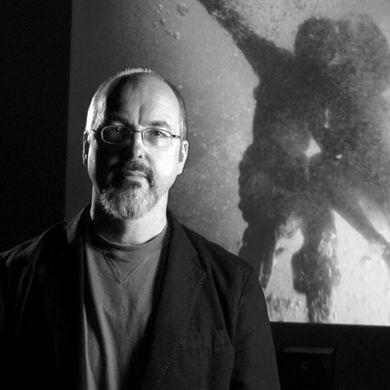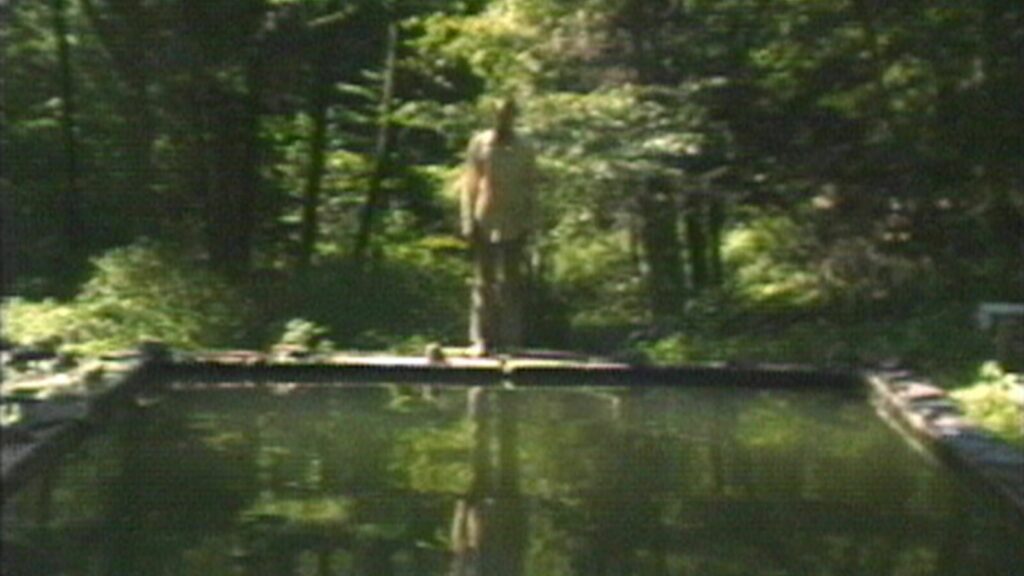
The Reflecting Pool (USA, 1977) 7 min color
The Passing (USA, 1991) 55 min B&W

This week’s edition of Fringe Fridays honours media artist Bill Viola, who passed away this July 12th. Viola was a pioneer in video art; his pieces explored the format’s properties, while extrapolating on cyclical themes of life, death, time and memory. Although he would later move his to installation pieces, his video titles remain durable after five decades.
In tribute to the man and his work, we’ve revisited the two films that introduced me to Bill Viola. I had seen The Reflecting Pool and The Passing in 1999 at one of Jackman Hall’s much-missed free screenings of experimental cinema. I have since viewed most of his videos that he had made available, and wrote an article on Viola in 2008, which won’t be reprinted here because I felt I still didn’t do the works complete justice. Of this oeuvre, tonight’s two films remain the most satisfying to me: perhaps because they were the first I viewed, and because they remain most accessible and the least ambigious. By revisiting the first two films I first saw, you might say I was completing the cycle by returning to the beginning. As in Viola’s work, time has a way of folding in on itself.
The past and present co-exist in The Reflecting Pool, a man jumps into a swimming pool, and his body freezes in mid-air before hitting the water. However, the water still ripples in the pool below. We also witness images in the pool, of people milling about: however, the bodies that cast the reflection are not seen. In this fraction of a section in which the man hovers above the water, we see and hear moments from another time. Then the moon is reflected in the pool, all while the man and the foliage surrounding the pool are illuminated by day light. Gradually, this frozen form of a man blurs, and meshes with the background. Thus, the man is becoming just as pliable as water. Past and present similarly become entwined like droplets of water.

Years later, I saw this work playing on an outdoor screen during Nuit Blanche. In this context, it took on the essence of a video installation: the movie is just long enough (or short enough) to be taken in my spectators before they moved on to another exhibit; although the work has a linear narrative, it could also work as an installation loop.
The Passing intercuts extreme close-ups of eyes with nocturnal images, shot with various exposures and effects to simulate either different dream states, or perhaps different states of being. Viola’s state-of-the art imagery is notable for its sharpness and colour, and yet perhaps The Passing, in its glistening black and white, remains his most visually stunning (especially the nighttime imagery of cities and deserts).
Finally, we see a shot of an elderly woman with her eyes closed, and the camera pulls back to reveal we are seeing Viola’s own mother (Wynne Lee Viola, to whom the video is dedicated) in a casket. Is this to suggest that some of the previous footage is from the vantage point of the deceased, now seeing the world with a heightened sense? Oft-repeated visuals include an adult figure falling into a pool of water, or POV of rising from water at the beach. At once, these aquatic images could be representative of the flesh dissolving from the natural world into the metaphysical realm where everything is of the same matter, or a grieving man regressing to the womb.